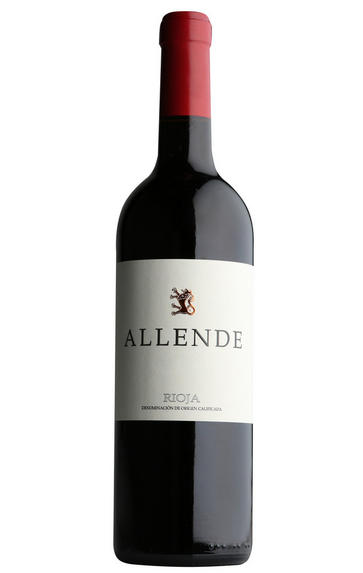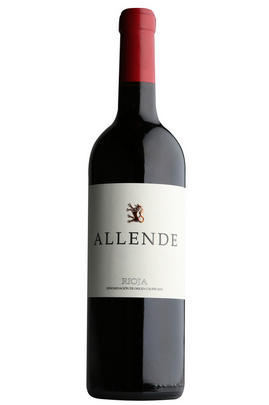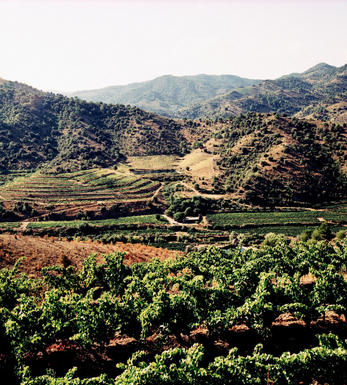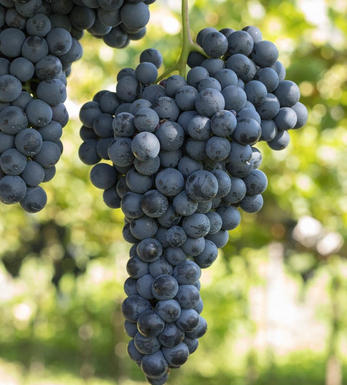
2015 Allende Tinto, Rioja, Spain

Critics reviews
A rich and fruity red with notes of baked cherries, biscuits, red plums and red roses. Medium-to-full-bodied with firm tannins. It is structured and textured with a focused finish. It's a little old school and concentrated—100% tempranillo.
It needs two or three years to soften but will always be very big.
James Suckling, JamesSuckling.com (January 2023)
About this WINE

Finca Allende
Finca Allende, the estate created by Brother and sister team Mercedes and Miguel Angel de Gregorio, is located in the hill town of Briones in the Rioja Alta. 'Allende' can be roughly translated as 'further'; its philosophy is to go further and further towards creating the perfect Rioja. This has been done by marrying the old and the new, by embracing the traditional grape varieties but then treating them to new French oak. A further distinguishing characteristic, apart from their ripeness and structure, is that Allende's best wines are vineyard-based, with focus on the expression of Rioja's varied terroir.
Finca Allende's production comes from their own 22 hectares supplemented by contracts with certain other growers in Briones. The principal cuvée is 100% Tempranillo aged for thirteen months in predominantly French oak. The oldest vines (Tempranillo with some Graciano) are kept back to make Aurus.
The full potential of the estate is eloquently illustrated by Calvario, a single-vineyard wine from 65+ year-old Tempranillo vines with magnificent aromatics and lush fruit, that clearly underlines the family's qualitative aspirations.

Rioja
Rioja is known primarily for its reds although it also makes white wines from the Viura and Malvasia grapes and rosés mainly from Garnacha. Most wineries (bodegas) have their own distinct red wine formula, but are normally a combination of Tempranillo, Garnacha and sometimes Graciano. Other red varieties recently approved into the Denominación de Origen Calificada (DOCa) regulations are the little-known Maturana Tinta, Maturana Parda, and Monastel (not to be confused with Monastrell). The most important of these by far is the king of native Spanish varieties, Tempranillo, which imbues the wines with complex and concentrated fruit flavours.
The Garnacha, meanwhile, bestows its wines with warm, ripe fruit and adds an alcohol punch. Graciano is an améliorateur grape (one that is added, often in small proportions, to add a little something to the final blend) and is found mainly in Reserva and Gran Reserva wines, albeit in small quantities (two to five percent), adding freshness and aroma, and enhancing the wines' ageing potential.
Crianza wines are aged for one year in oak followed by maturation for one year in bottle before being released for sale. Reservas must undergo a minimum of three years’ ageing before release, at least one of which should be in oak casks. Finally, Gran Reservas, which are only produced in the finest vintages, must spend at least five years maturing, of which at least two must be in oak.
Geographically, Rioja is divided in to three districts: Alavesa, Alta and Baja. Rioja Alavesa lies in the northwest of the La Rioja region in the Basque province of Álava. Along with Rioja Alta, it is the heartland of the Tempranillo grape. Rioja Alta, to the north-west and south of the Ebro River in the province of La Rioja, stretches as far as the city of Logroño. Elegance and poise is the hallmark of wines made here with Rioja Alta Tempranillo. Mazuelo (Carignan) is occasionally added to wines from this area to provide tannins and colour. Rioja Baja, located to the south-east, is the hottest of the three districts and specialises in Garnacha.
Rioja has witnessed a broad stylistic evolution over the years. The classic Riojas pioneered by Murrieta and Riscal in the 19thcentury were distinguished by long oak-barrel-ageing whereas the modern style, represented by Marqués de Cáceres since 1970, showcases the fruit and freshness of Tempranillo, keeping oak ageing to the legal minimum. The post-modern school that emerged in the late 1990s from producers like Palacios Remondo and Finca Allende concentrate on making wines from old vines or specific vineyard plots to accentuate the terroir, and using larger proportions of minority varietals such as Graciano.
The alta expression wines, pioneered by Finca Allende (among others) and later taken up by almost every other producer in Rioja, represent the newest flagship category in Rioja. Alongside the traditional Gran Reservas, alta expression wines are limited production and come from low-yielding vines, often from a single vineyard, and are hand-picked. Excellent examples of this style are Artadi's Pagos Viejos and El Pison.
However, modernisation has not held back the continuation of successful traditional styles as well. Happily long-established houses such La Rioja Alta, CVNE and Marques de Vargas continue to make graceful, old style wines better than ever before.
White Rioja is typically produced by the Viura grape which must comprise at least 51 percent of the blend; the rest can be made up by other, recently-authorised varieties, namely Sauvignon Blanc, Chardonnay and Verdejo, as well as the native Maturana Blanca, Tempranillo Blanco, and Turruntés (not to be mistaken for Torrontés).
Recommended Producers:
Finca Allende, Amezola de la Mora, Artadi, CVNE, Marqués de Vargas, Palacios Remondo, La Rioja Alta, Murrieta.

Teroldego
Teroldego is cultivated exclusively in Trentino in north-east Italy. It performs best in the Campo Rotaliano plain north of Trento in the heart of Trentino. It is a relatively simple variety to cultivate and produces wine low in tannins but usually deep in colour, with vivacious acidity and good levels of fruit concentration.
Generally speaking Teroldego is most enjoyable with no more than 3 years of bottle ageing, while the fruit is still fresh and boisterous. However some examples from the best producers can improve for up to 10 years.


Buying options
Add to wishlist
Description
A rich and fruity red with notes of baked cherries, biscuits, red plums and red roses. Medium-to-full-bodied with firm tannins. It is structured and textured with a focused finish. It's a little old school and concentrated—100% tempranillo.
It needs two or three years to soften but will always be very big.
James Suckling, JamesSuckling.com (January 2023)
wine at a glance
Delivery and quality guarantee